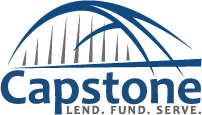DSCR Loan Guide: How They Work & Who Offers Them
DSCR is a specialized tool tailored to real estate investing. In this guide, we’ll explain what DSCR is, how to calculate it, and how their loans work. Finally, we’ll compare that conventional route with an alternative approach suited to short-term, fast-turn real estate investors.
Image by Charlize D
What Is DSCR?
The debt service coverage ratio (DSCR) is a financial metric that compares the net operating income (NOI) of a property to its debt obligations (principal plus interest) over a period, usually annual. In elementary terms, DSCR is a calculation used to determine whether a loan borrower can cover (and exceed) their payments to their lender.
In real estate lending, DSCR helps lenders assess whether the income generated by a property is sufficient to cover the mortgage payments and related debt service. If the ratio is above 1.0, the property produces more income than needed to pay debt; if below 1.0, the property’s income is insufficient to cover obligations.
Unlike personal loans, which use borrower income and credit history as primary metrics, DSCR focuses on the property’s performance.
How to Calculate DSCR
The Basic Formula
To understand how to calculate DSCR, use the following formula:
DSCR = Net Operating Income (NOI) ÷ Total Debt Service
Net Operating Income (NOI): Gross rental income minus operating expenses (excluding debt service and often depreciation, amortization, and income taxes).
Total Debt Service: The required principal + interest payments on loan(s) over the same period (commonly one year).
Example: If a property generates $60,000 in NOI and the annual debt payments total $50,000, then:
DSCR = 60,000 ÷ 50,000 = 1.20
That means the property generates 20% more income than needed to cover debt service.
Considerations & Adjustments
In practice, lenders may include additional costs such as taxes, insurance, and reserves (sometimes in a metric called “PITIA” which is principal, interest, taxes, insurance, and association fees).
Some lenders adjust interest payments for tax deductibility or distinguish interest vs. principal.
It’s important to use consistent timing (annualizing) for both NOI and debt service when applying the formula.
Understanding how to calculate DSCR ensures you can estimate loan eligibility before approaching lenders.
What Is a Good DSCR Ratio?
Lenders typically establish minimum thresholds for DSCR to mitigate risk. So, what is a good DSCR ratio?
Many lenders look for a DSCR between 1.10 to 1.25 as a baseline.
A DSCR of 1.25 or higher often helps you earn more favorable interest rates and terms.
Ratios above 2.0 are considered very strong, giving extra cushion for vacancies or income variation.
A DSCR of exactly 1.0 is technically breakeven; however, any dip in income would cause trouble, so lenders are often hesitant to approve loans at that threshold.
Hence, while the ideal threshold depends on property type, location, and lender risk appetite, aiming for 1.2–1.3 or higher is prudent.
How Does a DSCR Loan Work?
Structure & Qualification
A DSCR loan is a type of non-qualified mortgage (non-QM) or investment property loan that qualifies based on how a DSCR loan works (that is, the income generated by the property, rather than the borrower’s W-2 income or tax returns).
Under this structure:
The lender underwrites the loan by analyzing projected rent rolls, operating expenses, vacancy rates, and the DSCR.
Rather than requiring extensive personal documentation, the focus is on property-level cash flow.
Borrowers may still need to meet credit score, reserves, and down payment requirements, but income proofs are minimized or bypassed.
Use Cases & Loan Terms
DSCR loans are popular for both acquisition and refinancing of rental or income-producing properties.
They are often offered in 30-year fixed mortgages targeting long-term investors.
Some lenders also support shorter-term DSCR structures, particularly for small multifamily or single-family rentals.
Loan-to-value (LTV) ratios are often capped (e.g., 70–80%) depending on risk and DSCR strength.
Rates for DSCR loans tend to be higher than traditional conforming rates, reflecting added risk and fewer income documentation safeguards.
In short, the property itself is the primary collateral and income test, which simplifies qualification for many real estate investors.
Can You Refinance a DSCR Loan?
Yes, you can refinance a DSCR loan. Many lenders permit refinancing or cash-out refinance structures on DSCR loans, allowing investors to unlock equity and/or lower rates.
Types of DSCR Refinances
Refinancing a DSCR loan can potentially improve cash flow, reduce rates, or free up capital for expansion.
Rate-and-term refinance: Lower your interest rate or extend terms without pulling out cash.
Cash-out refinance: Borrow more than the existing loan balance, securing cash for upgrades or new investments, subject to DSCR and LTV limits.Some lenders require a seasoning period (e.g., 3–6 months ownership) before cash-out DSCR refinances.
Which Lenders Offer DSCR Loans?
When exploring which banks offer DSCR loans, you’ll typically look at lenders specializing in investment or non-QM mortgages. Here are typical providers and considerations.
Traditional & Specialized Lenders
Some community banks, regional banks, and credit unions will offer DSCR or rent-based underwriting products through their investment mortgage lines.
NASB Home Loans is one example of a lender that states DSCR underwriting for rental property loans.
Smaller finance companies and hard money lenders may offer DSCR-based loans for investors.
What to Check
Minimum DSCR requirement (e.g. 1.1x or 1.25x)
Maximum LTV and down payment standards
Credit score thresholds, reserves, and additional collateral standards
Whether the lender allows refinancing or “cash-out” DSCR products later
Geographic availability and property-type constraints (single-family, multi-unit, condo, short-term rental)
You’ll often find DSCR loan products via non-QM mortgage specialists, regional lenders willing to support investor-grade properties, or through brokered financing platforms.
When DSCR Becomes a Hurdle
For investors needing capital quickly or operating on short timeframes, traditional DSCR underwriting can slow things down or exclude properties that might make sense in the short term. That’s where alternative lenders that focus on collateral value, asset strength, and speed can supersede conventional DSCR-based approaches.
By focusing on the value of the property and exit prospects rather than rigid cash-flow thresholds, such lenders (like hard money lenders) can bridge gaps and help investors act quickly in competitive markets.
Fund Your Next Deal with Capstone Capital Partners
To be armed with better financing decisions in your next investment, consider Capstone Capital’s hard money lending team. Capstone emphasizes collateral value, asset strength, and lending speed to help investors seize opportunities without the delay of the traditional DSCR review.
If you’re an investor focused on speed, flexibility, and collateral-driven lending, contact us today! Close in as fast as 7 days with an appraisal in hand.



